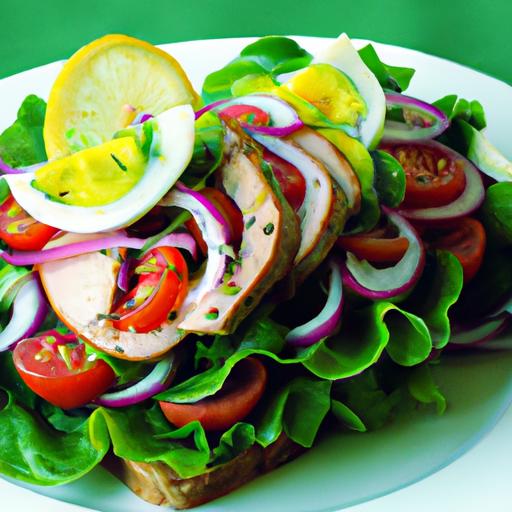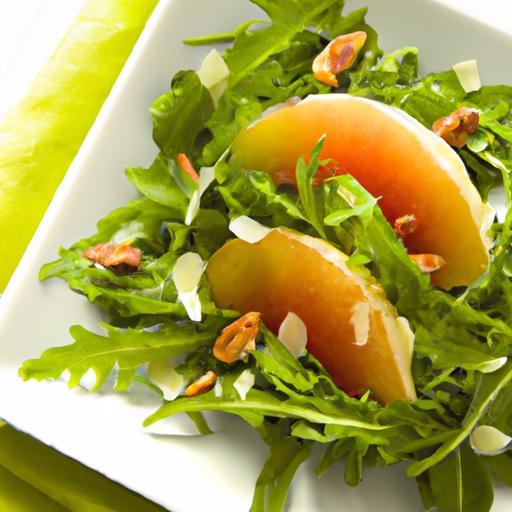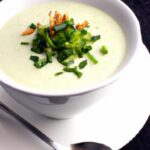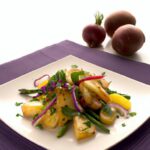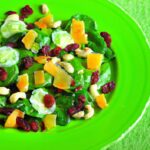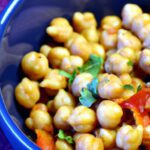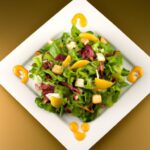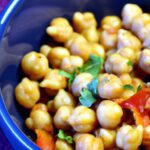In a world that never seems to slow down, chronic fatigue can feel like an invisible anchor, weighing you down when all you want is to embrace life’s vibrant energy. While endless cups of coffee might offer a fleeting boost, the key to sustained vitality often lies not in quick fixes but in what we nourish our bodies with every day. Imagine recipes that don’t just satiate hunger but spark a natural surge of vigor-dishes crafted to awaken your senses, fuel your cells, and gently push back against exhaustion. Welcome to a journey of energizing recipes designed to combat chronic fatigue naturally-where every bite is a step toward reclaiming your zest for life, powered by the wholesome gifts of nature.
Energizing recipes to combat chronic fatigue naturally rely on vibrant superfoods that stabilize blood sugar and provide sustained vitality. Imagine sipping a cooling blueberry and spinach smoothie, bursting with antioxidants and herbal infusions, or savoring a hearty quinoa and turmeric bowl that fuels your day without the dreaded energy crash. These recipes have become my go-to wellness allies-each bite and sip meticulously crafted to awaken both body and mind.
Prep and Cook Time
Prep: 10 minutes Cook: 15 minutes Total Time: 25 minutes
Yield
Serves 2 energizing portions
Difficulty Level
Easy
Ingredients
- 1 cup fresh spinach, loosely packed
- 1/2 cup blueberries, fresh or frozen
- 1 medium ripe banana, sliced
- 1 tbsp chia seeds
- 1 tsp ground turmeric
- 1 cup unsweetened almond milk (or oat milk for creaminess)
- 1 tbsp raw honey or maple syrup (optional)
- 1/2 tsp ground cinnamon
- 1/2 inch piece fresh ginger, peeled and chopped
- 1 tbsp fresh lemon juice
- 1/2 cup brewed green tea, cooled (for herbal infusion)
- Ice cubes, as needed
Instructions
- Prepare the herbal base: Brew green tea and allow it to cool to room temperature. This natural infusion enhances mental clarity with gentle caffeine and antioxidants.
- Combine superfoods: In a high-speed blender, add spinach, blueberries, banana, turmeric, ginger, cinnamon, and chia seeds. Blend on low to break down the fibrous ingredients.
- Add liquids and sweetness: Pour in almond milk, brewed green tea, lemon juice, and drizzle raw honey if using. Blend at high speed until smooth and creamy.
- Adjust consistency: Add ice cubes for a chilled smoothie or more almond milk if you prefer a thinner texture. Pulse briefly to combine.
- Serve immediately: Pour into chilled glasses and garnish with a sprinkle of extra chia seeds and a few fresh blueberries on top for visual vibrancy.
Chef’s Notes
- For a vegan option, omit honey and increase maple syrup slightly.
- Substitute spinach with kale or swiss chard for variation without losing vital nutrients.
- Make ahead by blending all ingredients except ice and lemon juice; store in an airtight container for up to 24 hours. Add lemon juice and ice just before serving for freshness.
- If you prefer a more herbal-forward flavor, experiment with adding fresh mint or basil leaves.
Serving Suggestions
For a complete energizing meal, pair this smoothie with a protein-packed quinoa salad using chickpeas and roasted vegetables. Garnish the smoothie with edible flowers or lemon zest to create an inviting presentation for morning or afternoon revitalization.

| Nutrient | Per Serving |
|---|---|
| Calories | 210 kcal |
| Protein | 5 g |
| Carbohydrates | 38 g |
| Fat | 5 g |
Balancing your blood sugar with nourishing whole foods like these smoothies creates a foundation of sustained energy all day long-no spikes, no crashes. To delve deeper into managing energy, you might find this comprehensive guide on blood sugar balance helpful and credible.
Q&A
Q&A: Energizing Recipes to Combat Chronic Fatigue Naturally
Q1: What role does nutrition play in managing chronic fatigue?
A1: Nutrition is a cornerstone in managing chronic fatigue because the foods we consume directly impact our energy levels, immune function, and overall well-being. Nutrient-dense meals provide essential vitamins, minerals, and antioxidants that help combat inflammation and oxidative stress-two major contributors to fatigue. By fueling the body with the right ingredients, we can naturally boost energy and support cellular repair.
Q2: Which ingredients are best to include in energizing recipes?
A2: Look for ingredients rich in B vitamins (like spinach and quinoa), magnesium (such as pumpkin seeds and leafy greens), iron (found in lentils and lean meats), and complex carbohydrates (whole oats and sweet potatoes). These nutrients help enhance energy production at the cellular level. Additionally, natural adaptogens like turmeric and ginger can reduce inflammation and promote vitality.
Q3: Can certain foods help reduce the brain fog associated with chronic fatigue?
A3: Absolutely. Foods high in omega-3 fatty acids-like salmon, chia seeds, and walnuts-support brain health and improve cognitive clarity. Antioxidant-packed berries and dark chocolate also combat oxidative damage in the brain, easing mental fatigue. Including leafy greens and green tea can enhance alertness and focus, helping to cut through that foggy feeling.
Q4: How can I make energizing recipes more appealing if I’m too tired to cook?
A4: Simple, no-fuss recipes are key. Think vibrant smoothies blending spinach, banana, and almond butter, or overnight oats mixed with chia seeds and fresh berries. Batch cooking energy-packed soups and stews on your low-energy days can provide nourishing options when you feel drained. Keep healthy snacks like nuts, boiled eggs, or hummus with veggie sticks handy for quick energy hits.
Q5: Are there any particular recipe ideas you recommend for sustained energy throughout the day?
A5: Yes! Try a quinoa and roasted vegetable salad tossed with a lemon-tahini dressing for a balanced lunch loaded with protein, fiber, and healthy fats. For breakfast, a warm bowl of oatmeal topped with flaxseeds, walnuts, and a drizzle of honey offers slow-releasing energy. Snack-wise, a smoothie with matcha, banana, and spinach can awaken your senses without the crash that caffeine sometimes brings.
Q6: Should hydration be part of the conversation when addressing chronic fatigue?
A6: Definitely! Dehydration can exacerbate feelings of fatigue and sluggishness. Alongside energizing foods, maintaining proper hydration with water, herbal teas, or infused waters helps keep the body’s systems optimized. Incorporating water-rich fruits like watermelon and cucumbers in your meals can provide an extra hydration boost.
Q7: Can these recipes replace medical treatment for chronic fatigue?
A7: While nourishing your body with energizing foods is a powerful natural strategy, it should complement-not replace-medical advice and treatment. Chronic fatigue can stem from complex underlying causes, so consulting healthcare professionals for a tailored plan is crucial. Think of these recipes as supportive allies on your journey toward renewed energy and wellness.
Final Thoughts
As the sun dips below the horizon and your day winds down, remember that combating chronic fatigue doesn’t have to mean relying on quick fixes or artificial stimulants. By nourishing your body with vibrant, energizing recipes rich in natural goodness, you’re fueling more than just your cells-you’re reigniting your spirit. These delicious, wholesome meals are more than food; they’re your daily allies in the journey toward sustained vitality. So, embrace the power of nature’s pantry, experiment boldly in your kitchen, and let every bite be a step closer to reclaiming your energy and zest for life. Here’s to vibrant days and energized tomorrows, one recipe at a time.